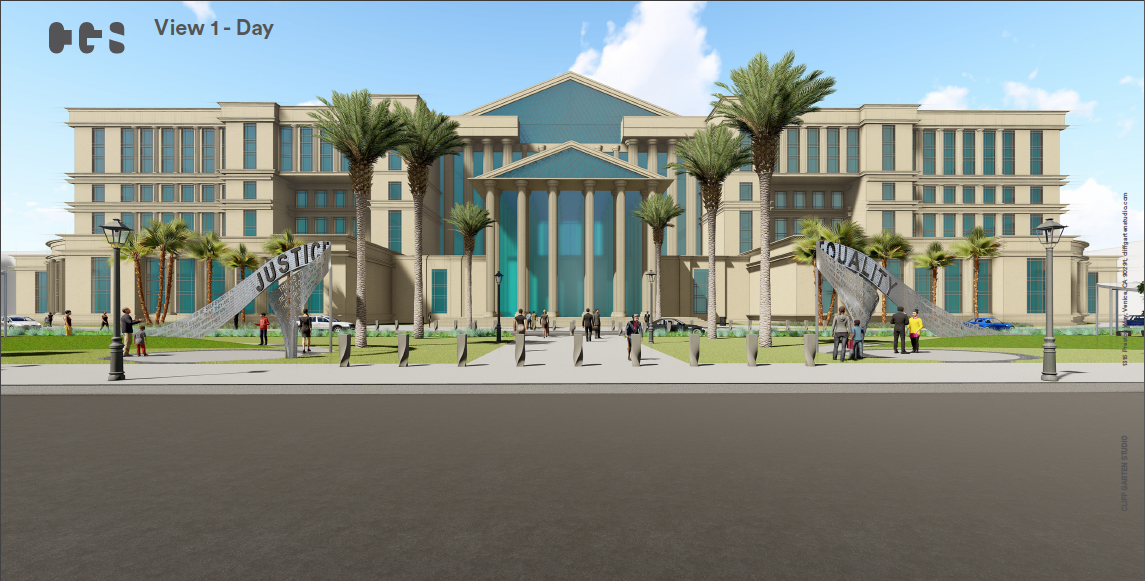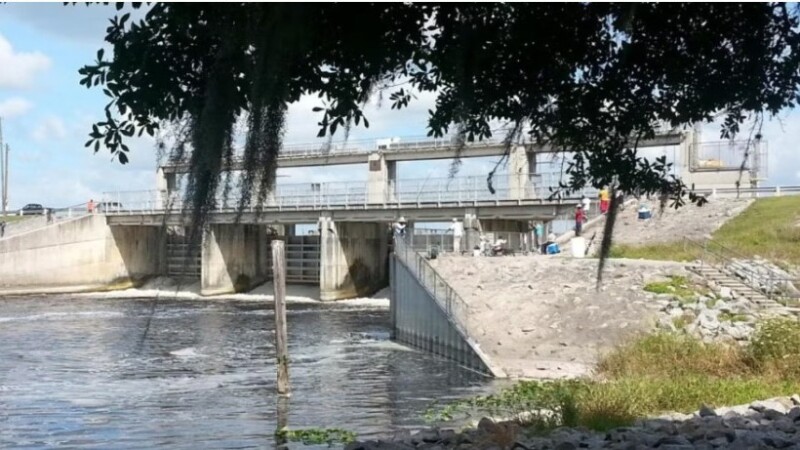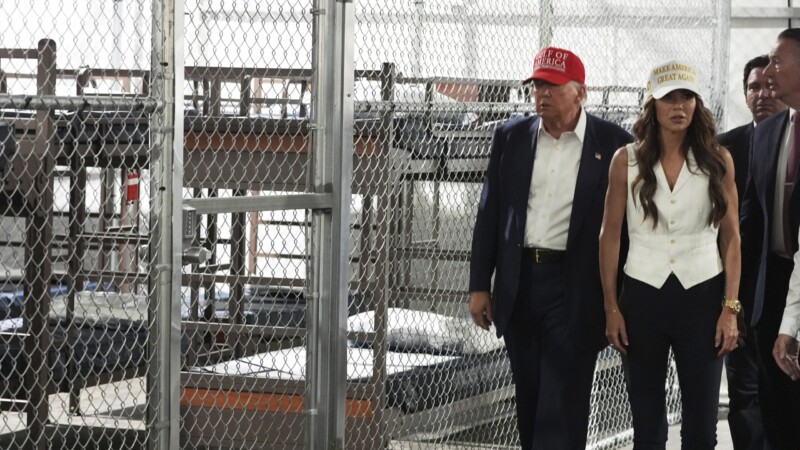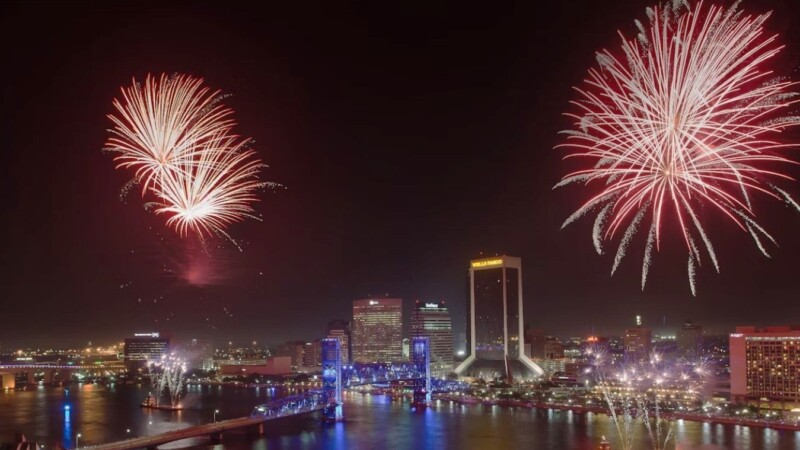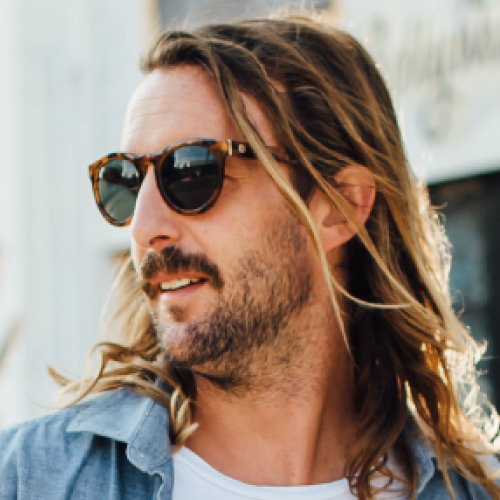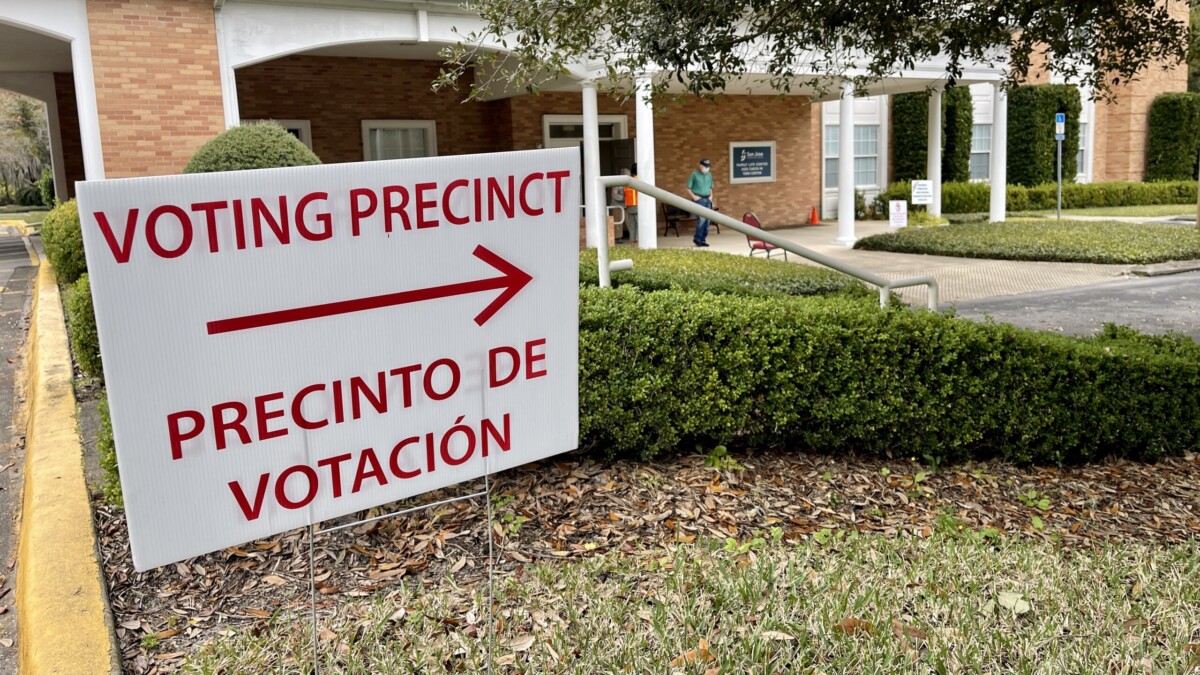The Duval County Courthouse is certainly a sight to behold. With its precast concrete and steel facade, the 800,000-square-foot, seven-story structure occupies two city blocks between Broad and Pearl streets in Downtown Jacksonville.
Since its completion in June of 2012, the courthouse has stuck out like a sore thumb, its massive scale and new-construction sheen offering a contrast to the dilapidated (or lack of) buildings that surrounded it, as well the relatively inert status of urban core construction projects since then.
Standing on the sidewalk on Adams Street in front of the courthouse on a windy and gray Saturday in February, however, there’s proof of overcoming that inertia. Cranes hover over the glass-and-steel shell of JEA’s new headquarters, soon to fill a nearby square block. Within a five-block radius, a handful of residential buildings have popped up and are now housing new Downtown residents, with several more projects underway.
And soon, a new public art project will reflect a bit more of that surrounding vibrancy on the verdant yet underutilized courthouse “lawn” — a 3-acre, palm tree-dotted patch of grass that fronts the behemoth structure.
In June of 2021, the city and Cultural Council of Greater Jacksonville revealed the winner in a competition to create this large-scale public art piece. An abstract sculptural representation of unraveling scrolls featuring excerpts from important American texts along with the writings of Jacksonville poets and authors, “These Truths” will flank the concrete walkway to the courthouse entrance. Installation, barring any new hurdles, should begin in 2023.
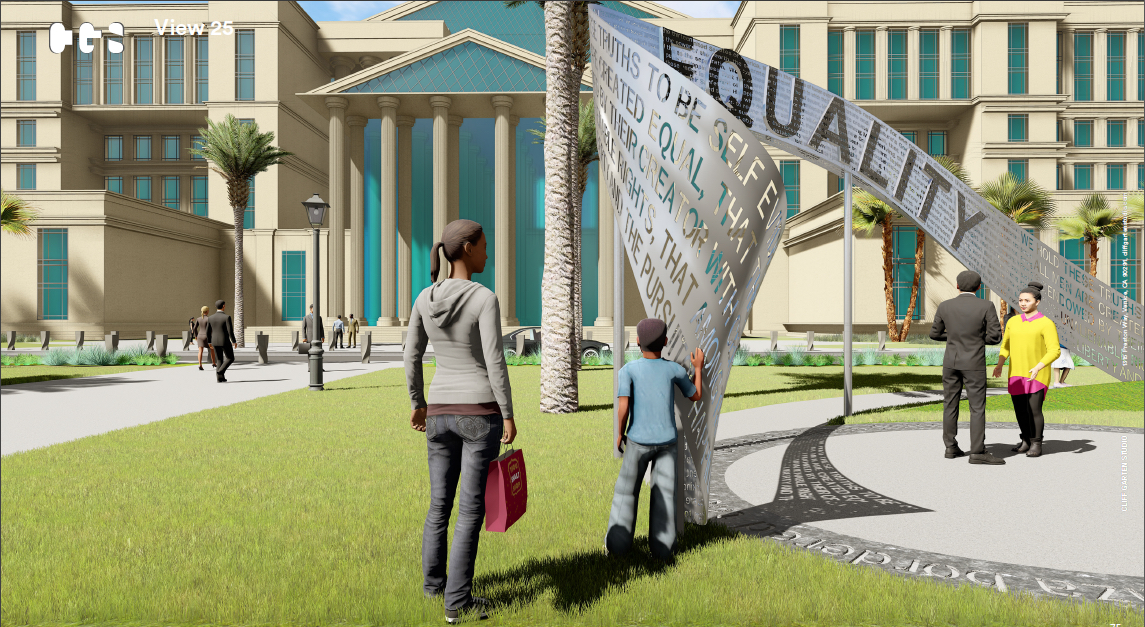
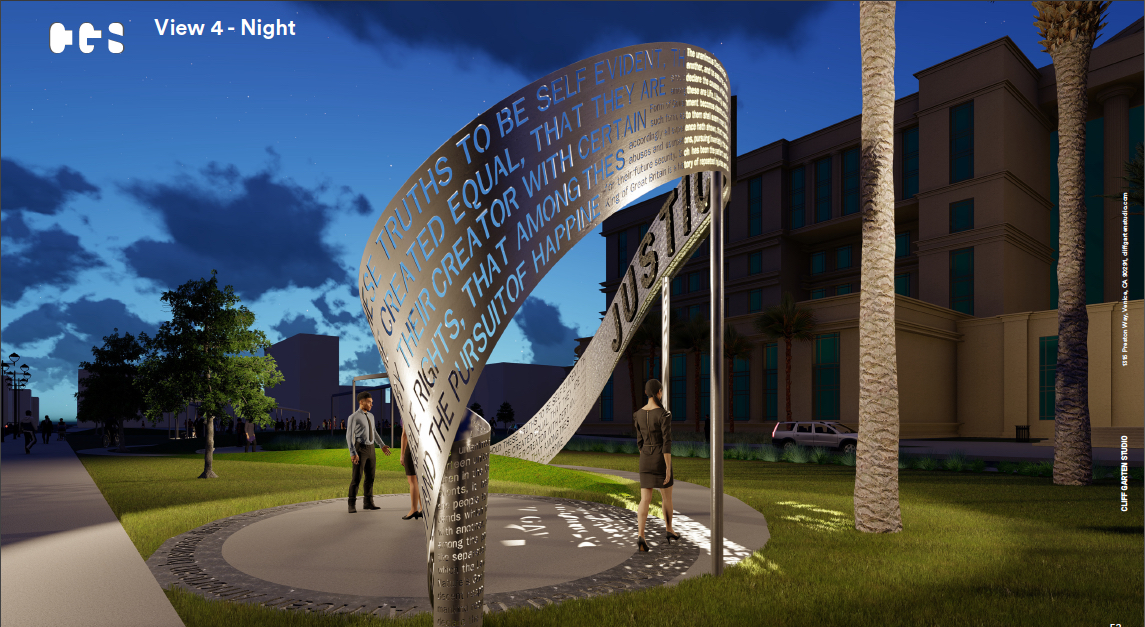
I’m visiting the installation site with Cory Driscoll, a musician and arts advocate, and, for the last six years a member of the CCGJ’s Art in Public Places Committee, an 11-member volunteer panel responsible for commissioning city-funded public art projects.
While Driscoll’s proud of all the pieces added during his tenure, the significance of an installation on the courthouse lawn can’t be overstated.
“Really, it’s such a testament to how difficult these projects and processes can be,” Driscoll says. Ten years ago, because of budget overruns and the fits-and-starts nature of the project’s construction, the public was highly skeptical of spending any more money on anything even remotely related to the courthouse. “When I joined the [APP] committee, it seemed like people were hesitant to start a project that had such a minimal budget for such a large space. And, honestly, I count myself among them.”
“We’re past the point where we can integrate something into the construction of the courthouse,” Ginny Steiger, then chair of APP committee, said of the prospect of public art on the courthouse lawn back in 2011, a year prior to the completion. Steiger was speaking to The Florida Times-Union, for a story headlined “Where You Won’t See Public Art: The Courthouse Lawn.”
“I’m not willing to spend one more cent on that project,” added Bill Bishop, then vice president of the Jacksonville City Council and a noted arts advocate, voicing the pervading skepticism around the Courthouse project at the time. “Something other than the courthouse would be smart.”
In more ways than one, “These Truths” will be the piéce de résistance of the city’s public art collection. More than a decade after the completion of the courthouse, and nearly 25 years since money was set aside for public art on the courthouse lawn, the public art installation here has flummoxed and eluded four Cultural Council executive directors and just as many mayoral administrations.
Though the courthouse lawn project has been a two-and-a-half-decade marathon, the Art in Public Places program has seemingly hit its stride in the last few years.
Driscoll is among many people with knowledge of the subject who tell me that, beyond pointing to any one piece of public art, APP has improved at executing its essential functions — commissioning, selecting, placing and maintaining public art — in recent years. “When I first joined the committee, there were more questions than answers,” he says. “A lot of the things that APP is tasked with carrying out didn’t have a process at all 10 years ago, even five years ago. Today, we’re much more streamlined and just much more efficient than we ever were before.”
The Courthouse and APP take shape
The city of Jacksonville’s art in public places program was created In 1997. City ordinance code Sec. 126.901 established the program, as well as the standards for public art, and also laid out a funding structure for new works. So, if the city approves a new capital improvement project — say, a new municipal building — a percentage of the budget (0.75%) for the project must be for funding and installing public art.
Three years later, as part of then-Mayor John Delaney’s Better Jacksonville Plan, the city funded the new Duval County Courthouse. At an estimated cost of $190 million, it was one of the city’s most expensive capital improvement projects ever. In accordance with municipal code, the courthouse budget netted $1.4 million for art, $690,000 of which was set aside for an installation on the proposed green space in front of the courthouse.
“A lot of times, a large bill like the Better Jacksonville Plan will say, ‘Let’s do this, this and this,’ but the figuring out who is going to do those things and how those things will get done really takes a while to hash out,” Driscoll says.
In the decade-plus since, the art in public places program has undergone many changes. In 2006, the work moved out of the Public Works Department and under the purview of the Cultural Council of Greater Jacksonville, the city-designated nonprofit responsible for allocating millions of dollars in cultural service grants to more than two dozen local arts organizations, including the Museum of Contemporary Art and the Florida Theatre (Editor’s note: WJCT Public Media receives some funding from CCGJ).
The Art in Public Places program really took off under the Cultural Council. As per city ordinance, the APP committee includes two members from the Cultural Council itself, as well as three art professionals and six community members, each from one of the city’s six planning districts. In addition to the committee, each individual project comes under the direction of an art-selection panel made up of more community stakeholders, including residents of the neighborhood where the art will be installed. CCGJ’s connections to the city’s cultural institutions certainly help bring awareness to those committee vacancies.
In the time in took to complete the courthouse, APP added a handful of important pieces to the city’s collection near various city landmarks, including sculptures in front of the VyStar Veterans Memorial Arena (2003), 121 Financial Ballpark (2005), the Jacksonville Center for the Performing Arts (2006) and several in and around the Main Library. Many of those projects were funded by the original $1.4 million allocated through the Better Jacksonville Plan through the courthouse project.
Infamously, by the time it was completed, the price of the courthouse had ballooned to more than $350 million. However, since art funding is based on the proposed budget of capital improvement projects, if we wanted public art on the courthouse lawn, we’d have the $690,000 originally set aside for it.
APP hits its stride
In the hour or so before we arrive at the courthouse lawn, Driscoll and I visit more than a half-dozen areas around Jacksonville’s urban core to view public art installations, both underway and completed in the last few months.
Our first stop is at the foot of an overpass that carries Roosevelt Boulevard over Edgewood Avenue — the main thoroughfare of Murray Hill, a fast-growing residential neighborhood west of Riverside. This will be the site of one of APP’s next projects, which will require input from several state and municipal organizations including the Florida Department of Transportation and dozens of community stakeholders. By that time, the sun will have long set on Driscoll’s time on the APP committee.
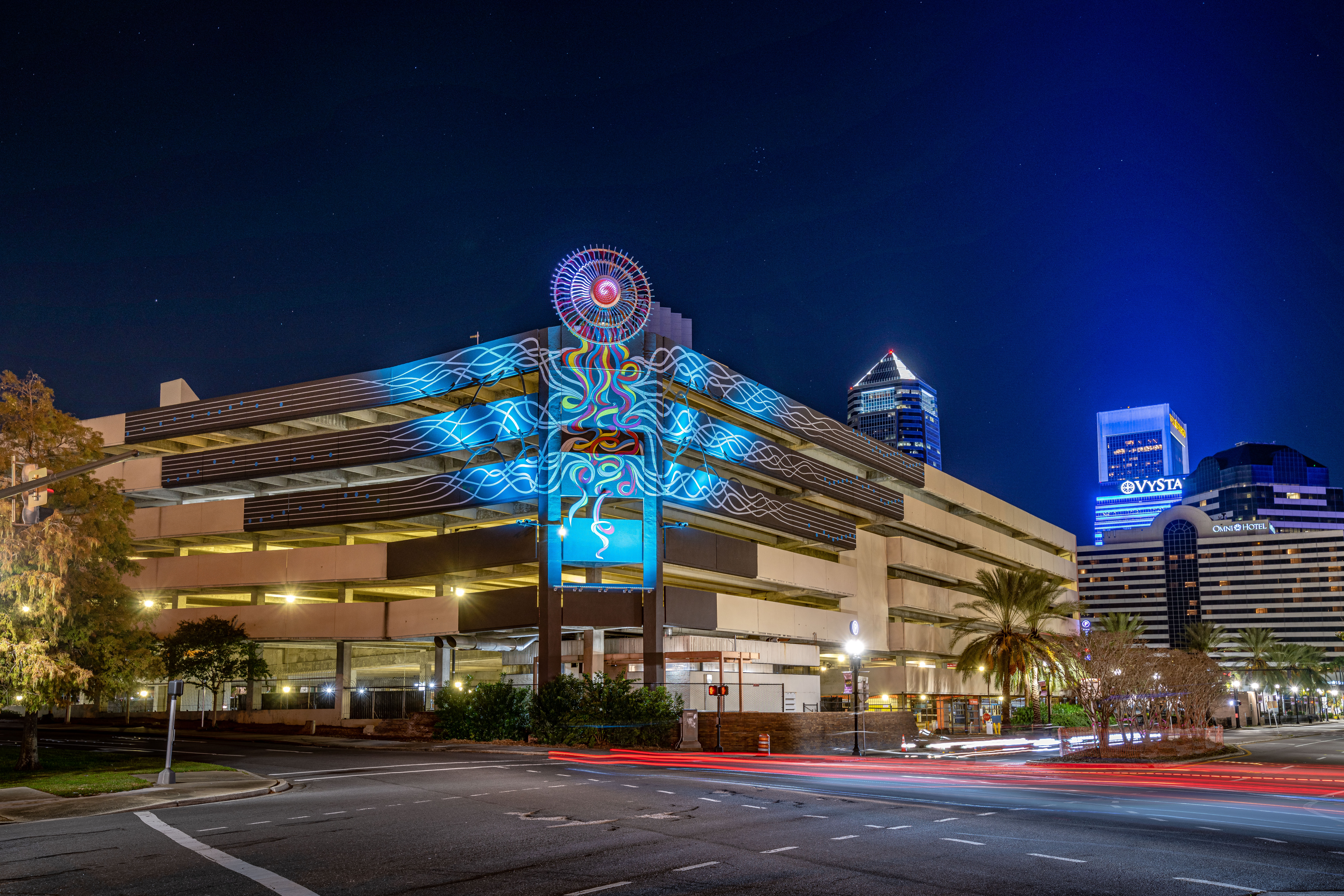
“I think the most important thing we have done in the last few years is make connections between different entities — the Cultural Council, the [APP Committee], Public Works, the Parks Department — and adding strategic partnerships with JTA, or private companies like Florida Blue or the Jaguars,” says Driscoll, who will term out after his second consecutive three-year term on the APP committee. “It really takes a lot of interested parties to get a piece of public art installed. And there are so many different neighborhoods and parts of the city we need to take into account.”
Driscoll gives me a tour of pieces added to the city’s public art collection in 2021:
- A pyramid of figures made of stainless and corten steel pictographs by artist Donald Gialanella in front of the Legends Community Center near the Sherwood Forest neighborhood;
- A mural celebrating the city’s Hispanic heritage by artist Whitney Perez inside Alfred I. duPont Middle School that was sponsored in part by the Jacksonville Jaguars;
- A stainless steel, powder-coated aluminum sculpture with mechanical components called “Blue Crest” installed in front of the brand new Florida Blue parking garage in Brooklyn, which was undertaken with private funds from the health insurance provider;
- And the striking abstract and theatrically lit “Emergence” atop the Water Street parking garage, facing anyone entering Downtown from Riverside Avenue or via the Acosta Bridge.
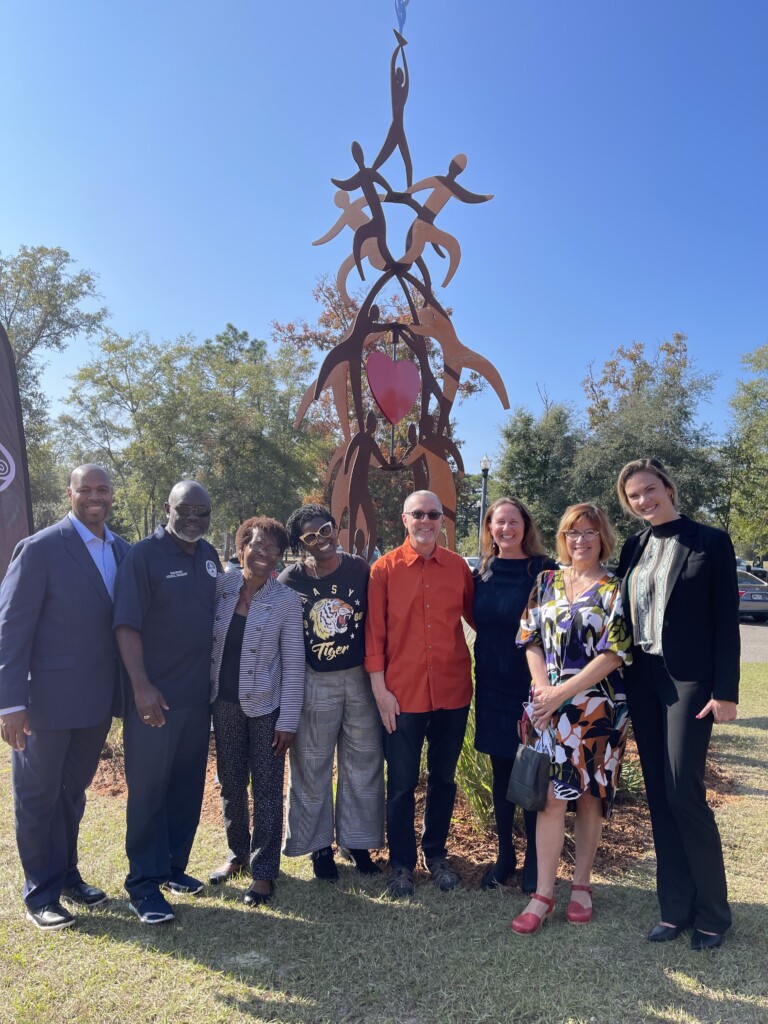
Driscoll’s engagement with APP began in 2015, even before he volunteered to join the committee. When he joined, he meant to be an agitator.
“I was really motivated by a few conversations I’d had with artists who felt like maybe the city wasn’t supporting the arts to its full potential,” Driscoll says. “I was there to mix things up, to say, ‘Why not this?’ or ‘Why not that?’ I wanted to be a megaphone for people’s frustrations.”

Driscoll now serves as the Art in Public Places Committee chair. He says though the glacial pace of public art projects can be maddening, he’s come to see the journey as rewarding.
“The APP process is a very democratic process, and the most frustrating things about a democratic process are also the most important. You’re taking in inputs from all of the places that you can gather, trying to get interest from the public body to get consensus among the committee. It’s one of the things that when you look back and realize you started at a point where a lot of people were coming from different perspectives, and now we are unified behind this idea.”
In February of 2022, based on the city’s more than $30 million in capital improvement plan expenditures, APP was awarded a budget of $318,000, more than twice what it was when Driscoll joined the committee.
“Generally speaking, things are moving in the right direction,” he says.
Returning to the lawn
Tony Allegretti, who served as executive director of the Cultural Council from 2014 to 2018, says ensuring money was earmarked for public art on the courthouse lawn was a high priority of his administration.
“There were several inquiries into using the money for something else,” Allegretti says, “whether it was the State Attorney’s Office wanting some of that budget to put art in their office or something else, we were constantly having to talk people out of it.”
One big project under Allegretti’s leadership was participating in an economic impact study for the state of Florida. As part of the study, carried out by nonprofit Americans for the Arts, the Cultural Council of Greater Jacksonville found $2.5 million in city arts investment had more than an $80 million impact in a single year, from 2015 to 2016.
“The main thrust of getting that study done was to make information about the impact of art a little bit more mainstream,” says Allegretti.
CCGJ’s current director of public art, Jen Jones Murray, says Allegretti set in motion a continued city investment in public art over the last half-decade. “What Tony did was huge,” she says. “Because before that, everybody just thought of it as this kind of like, you know, ‘Love you, mean it.’ But the economic impact study showed how cultural tourism and public art assets have an extreme effect on everything from the values of property to your ability to attract the public to come visit those spaces and spend money.”
For all the reports detailing the relationship between public art and development, as well as the eye-popping ROI of city-funded art, the actual execution of public art is much less sexy. It can be an arduous and confusing process, one that’s different for every city, depending on the structure of the organization tasked with carrying it out.
In recent years, APP has seemed to find its footing, according to many of the people I talked to with knowledge of the program. In 2016, APP shook loose $100,000 in past-due maintenance and administration funds from the city. In 2017, CCGJ launched an interactive map showing the location of every piece in the city’s public art collection — currently 127 pieces valued at more than $9 million. That same year, using $400,000 awarded through the Downtown Investment Authority’s Urban Arts Program, APP facilitated the installation of nearly 40 public art pieces in the city’s urban core, many as part of the Art Republic mural festival.
The proliferation of public art in the city’s Downtown, and especially the new coats of paint added to buildings in and around the urban core from the Art Republic installations, can now be seen as a precursor to the area’s current development boom.
“Igniting Duval County’s creative economy boosts our region’s economic growth through the
elevation of arts and cultural experiences, increases the impact of cultural tourism, and
enhances residential and commercial property values,” says current CCGJ Executive Director Diana Donovan.
Yet, the courthouse lawn remains empty.
Much of the work on the project over the last few years was dedicated to the mind-numbingly complex logistics of actually putting a large-scale art installation on a giant field in front of a building with significant and complicated security concerns.
“One of the first things we had to do was a survey of those who occupy the building regularly; judges, attorneys, public defenders — the stakeholders,” says Driscoll. “Then, there were a lot of security issues with the building itself. You can’t obstruct views of certain areas or put something in that makes the building vulnerable in any way.”
Stakeholder panels were formed. Outside groups of designers, architects and other professionals were consulted. The pandemic complicated the project. It also added to the price tag, as the cost of steel nearly tripled at one point.
Then there was the budget, that $600k allocated all the way back in the year 2000.
“It’s a really big space,” Driscoll says. “And that’s not a lot of money.”
Murray says the committee had to get resourceful. After digging through the original budget for APP outlined more than two decades ago by the Better Jacksonville Plan, Murray discovered, after the first round of installations at the baseball field and other city landmarks, there was $114,000 remaining.
“Everything is cooking now,” she says. “At this point, we have no choice but to deliver the project.”
Finally, in August of 2020, a call to artists was issued. Three finalists were chosen out of more than 140 submissions from around the globe. APP’s art selection panel ultimately chose Venice Beach, California, artist Cliff Garten’s “These Truths,” the sculpture that will include the writings of local poets and authors, including Yvette Angelique, Tim Gilmore, Ebony Payne English, Love Reigns and Sohrab Homi Fracis.
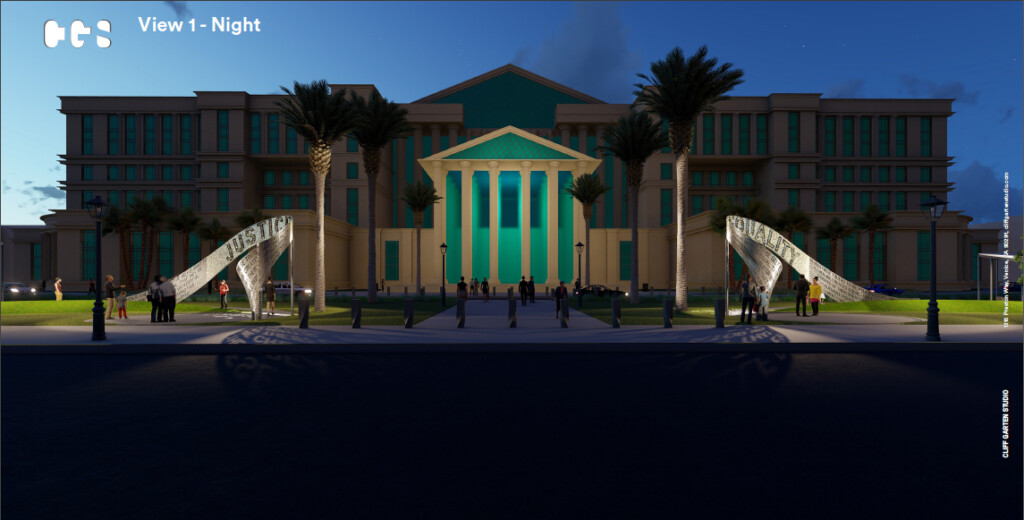
Back at the courthouse, Driscoll and I try to project an imaginary hologram of “These Truths,” over the concrete corridor toward the building’s front entrance, its scrolls unfurling out onto the grassy fields on both sides. By the time the real installation is underway, Driscoll will no longer be a member of the APP committee. But between now and then, he’ll oversee several more public art installations.
“Despite everything — the lack of funding, the limitations, the numerous adjustments that had to be made,” Driscoll says the courthouse lawn public art installation “proved to me that the spirit of creativity is not crushed by limitations, but challenged by them.”
Get involved with Art in Public Places:
Attend an APP meeting: The APP committee meets on the 2nd Wednesday of every month. Meetings start at 1 p.m. and are open to the public. Meeting are typically held at the Jessie Ball duPont Center in Downtown Jacksonville.
Join an APP art selection panel: The Cultural Council of Greater Jacksonville is now accepting nominations for APP’s Art Selection Panels. Here’s the nomination form.
Dig deeper: Visit the Cultural Council’s Public Art page.


